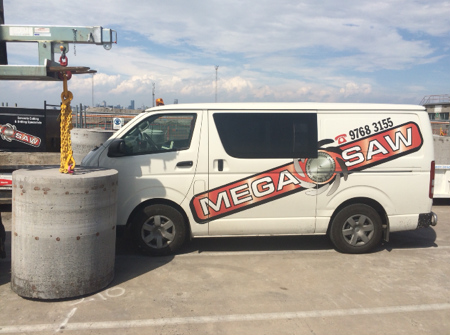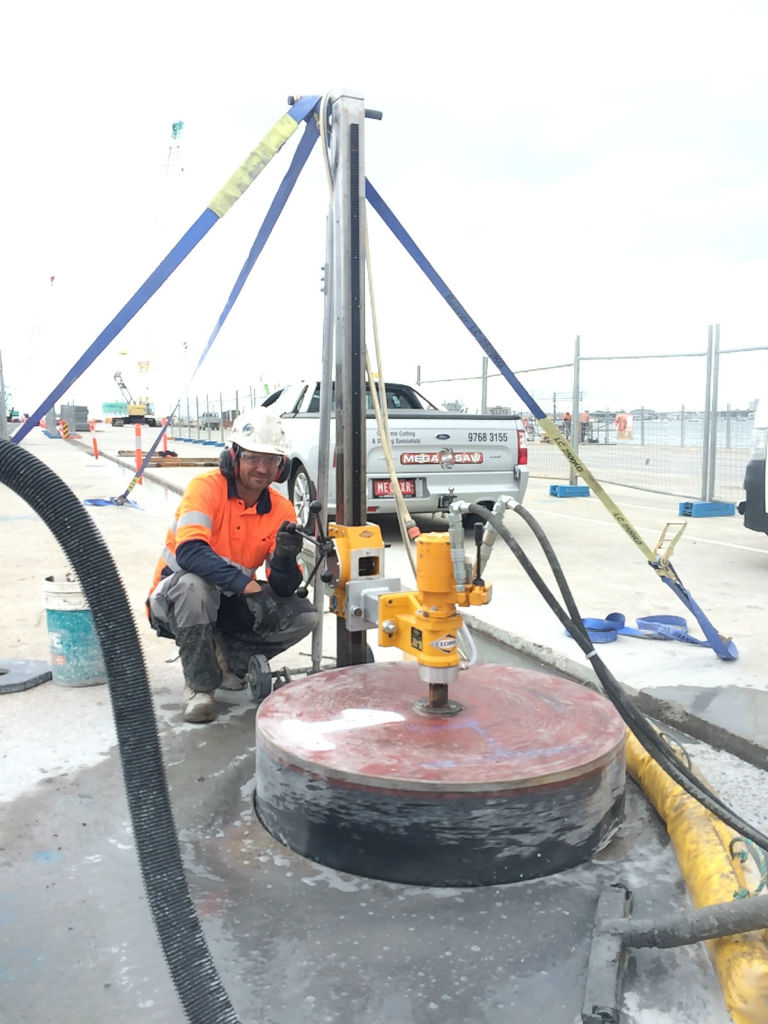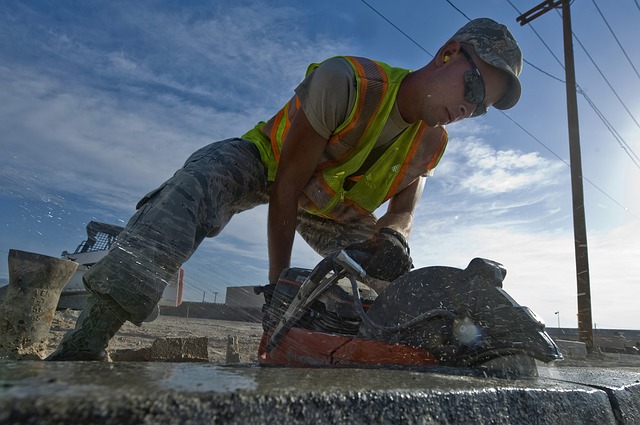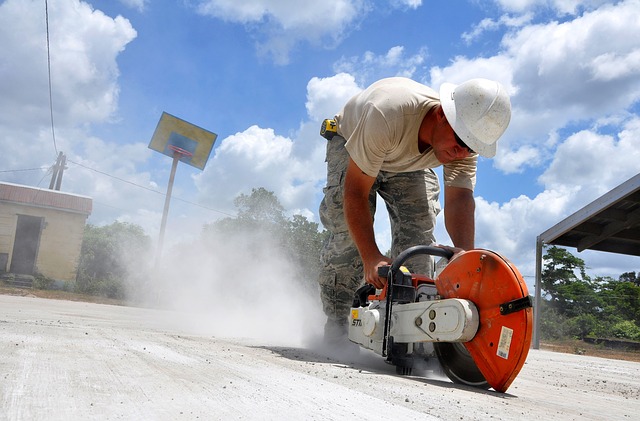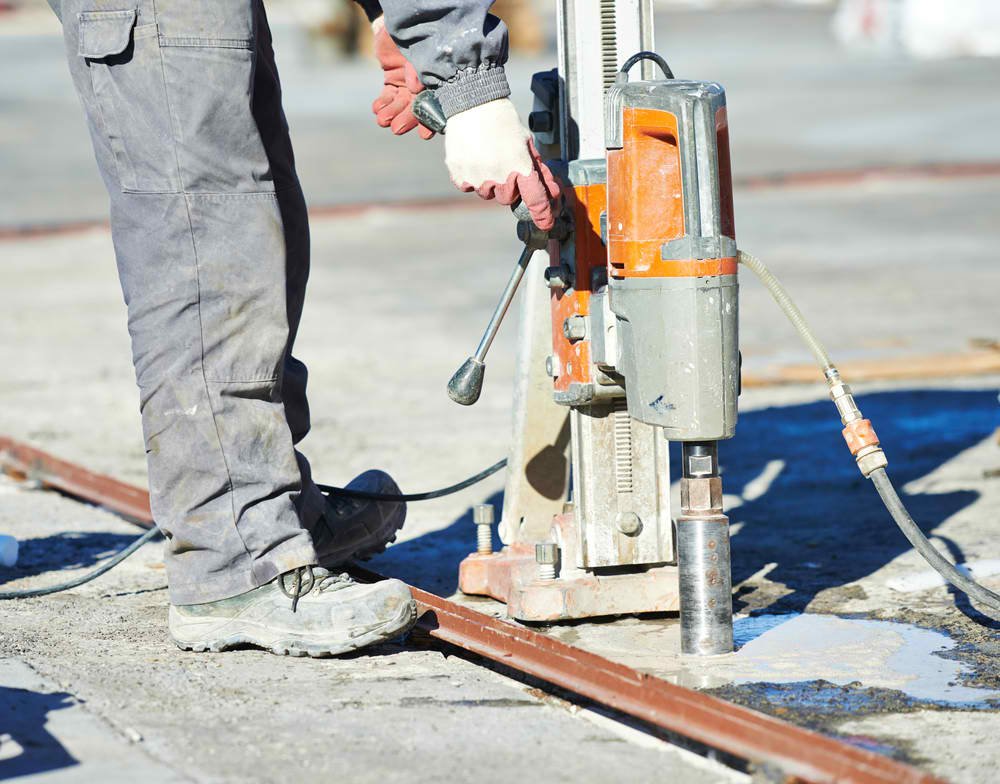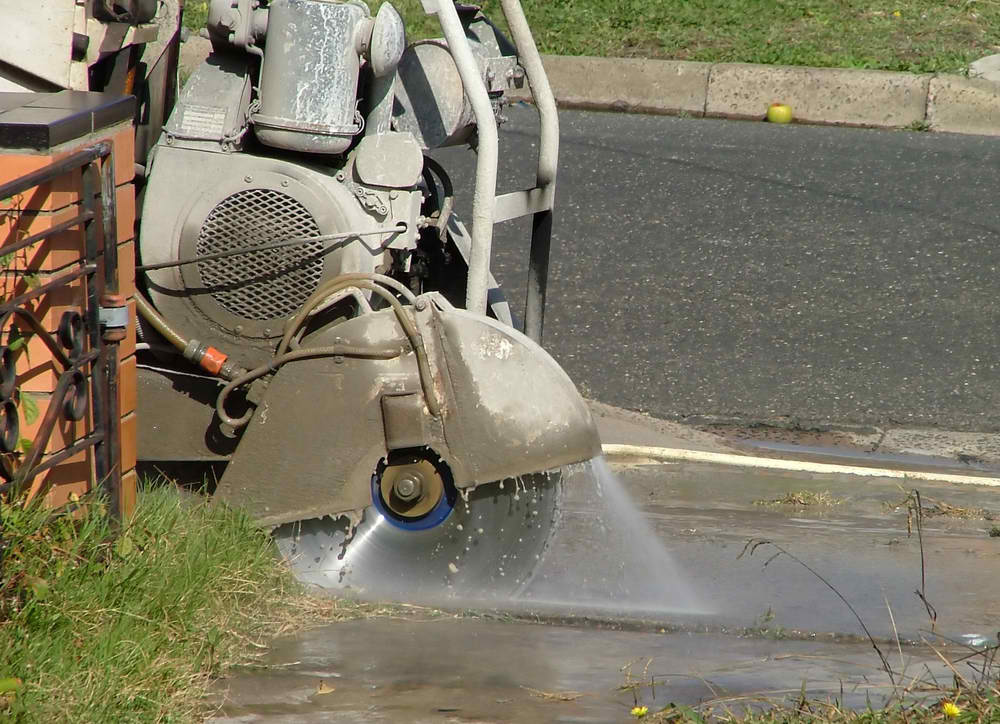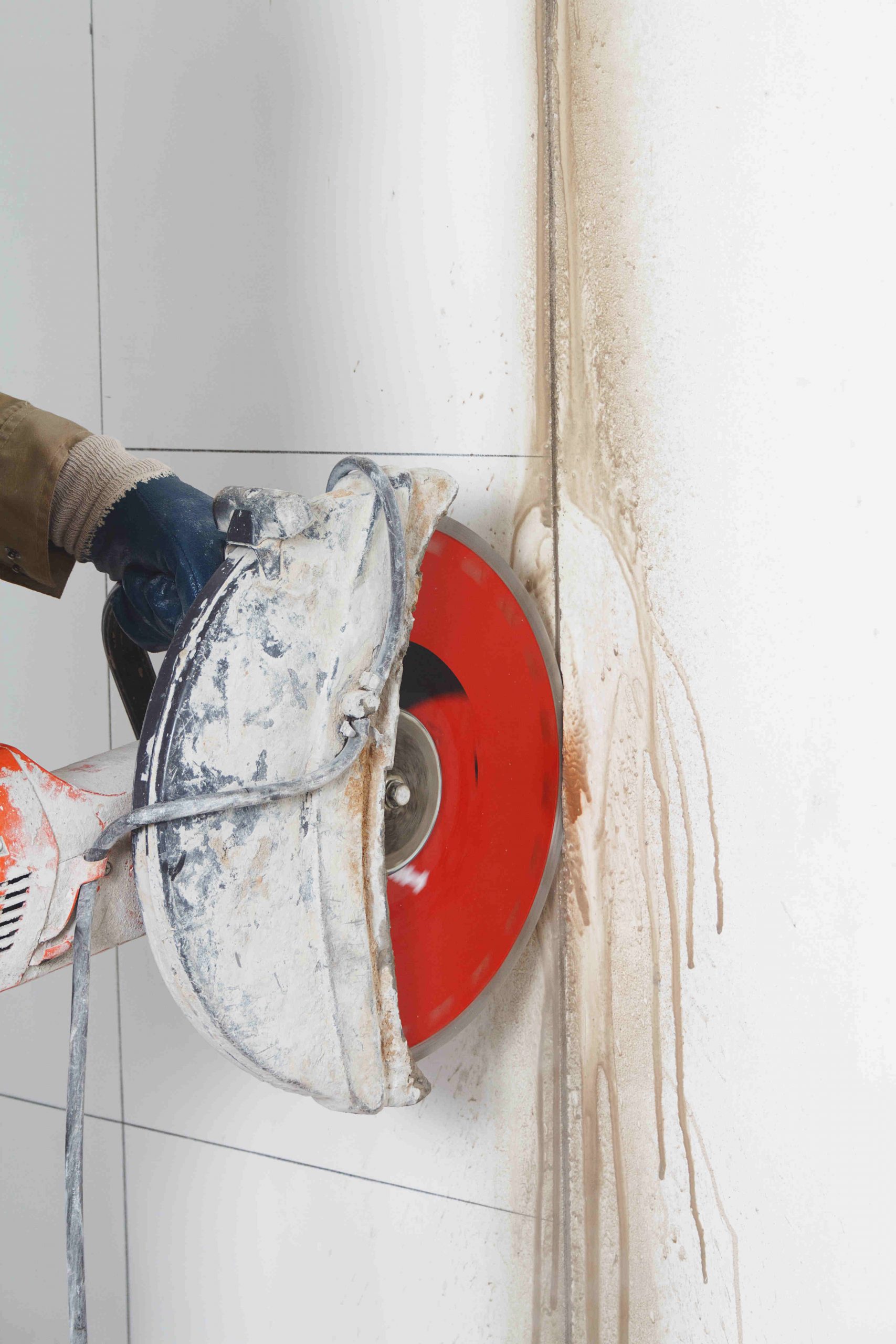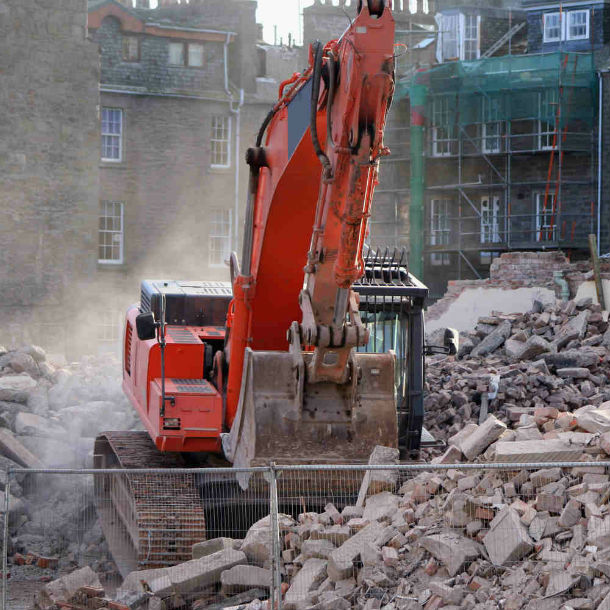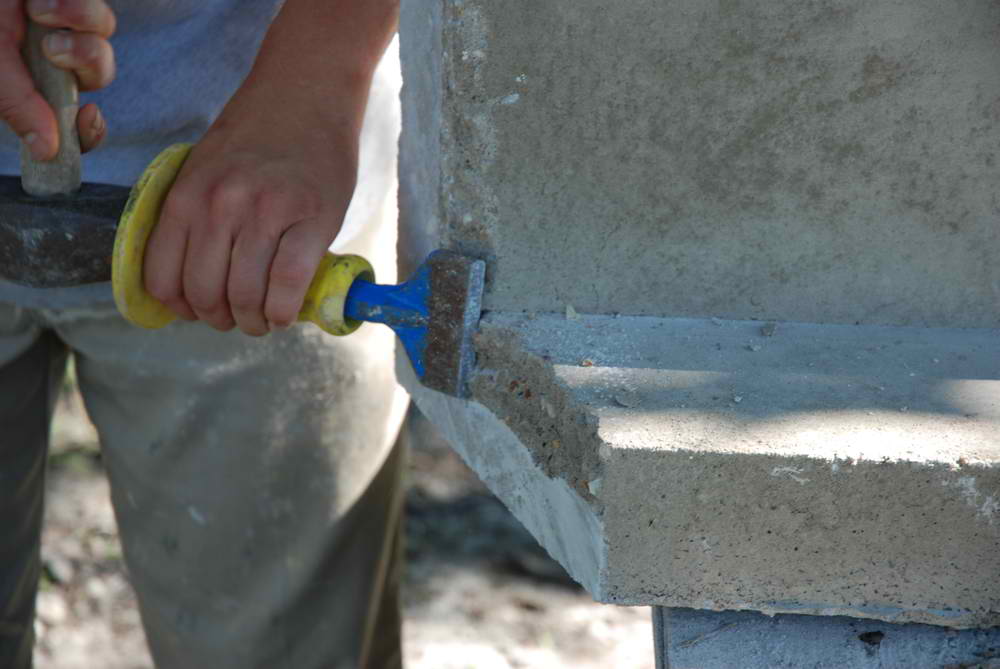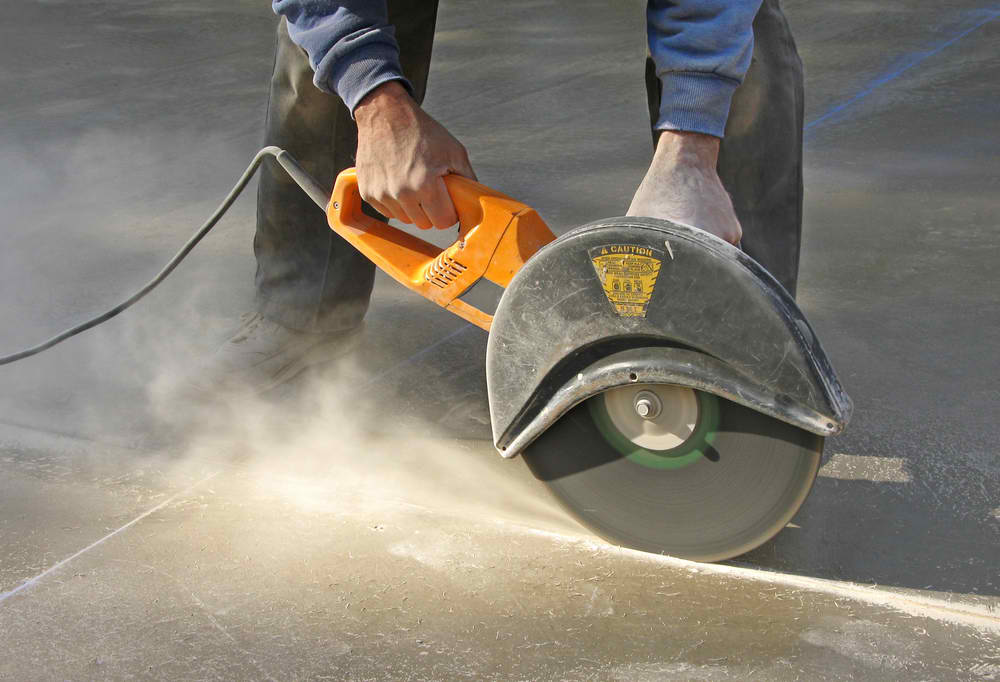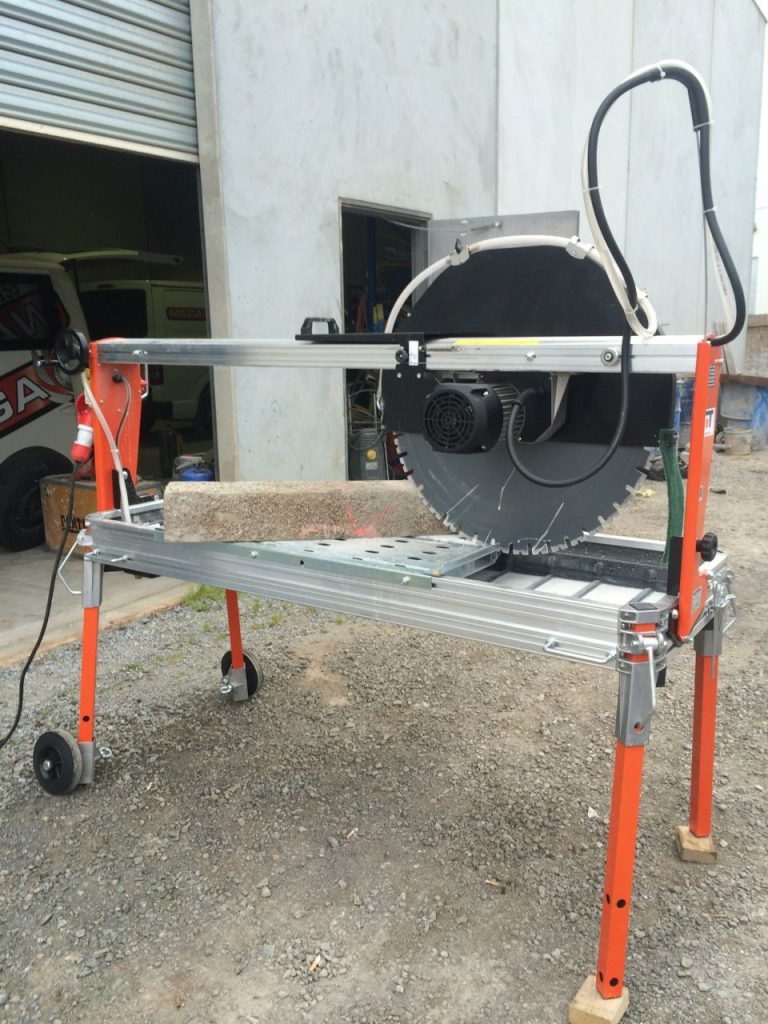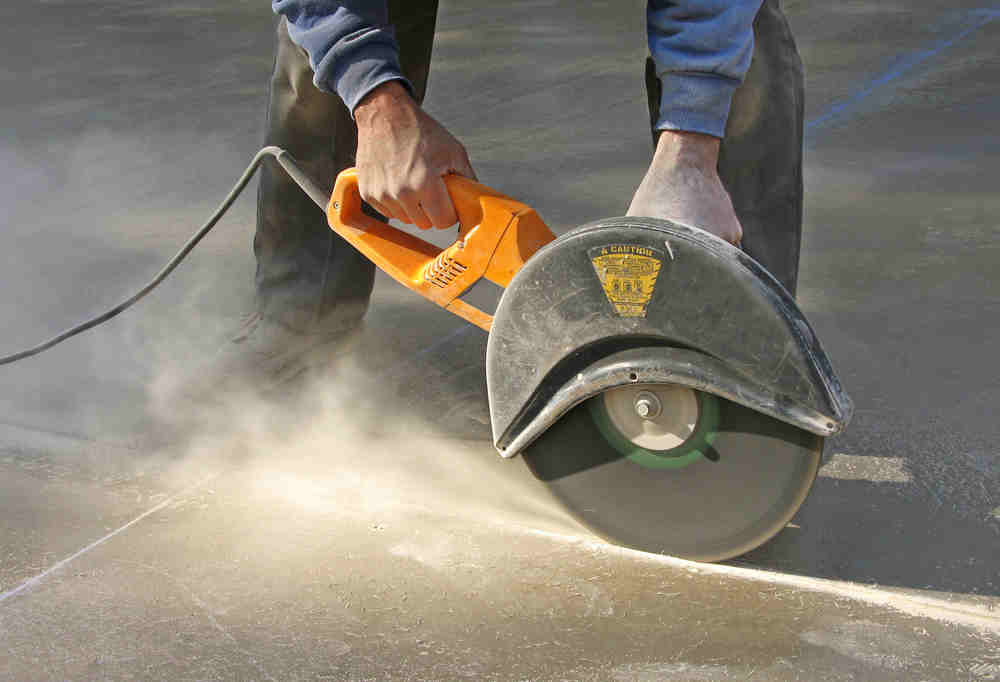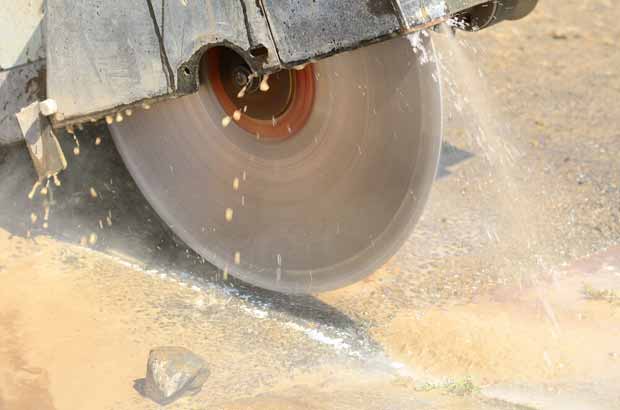
Most of us understand that any type of concrete cutting is generally a job that frequently produces clouds of dust. One factor related to this element and possibly not considered to any great extent by most contractors is; the content of those dust clouds. Concrete has a compound known as crystalline silica, which when injected into the atmosphere can present us with some health-related concerns. It’s a common compound found in various elements such as sand, quartz, flint and slate, but does not become a hazard until it is expelled into the air; for example, when concrete is ground, crushed, or cut with a saw.
The methods by which dust in workplaces is suppressed or controlled include wet drilling and water mist drilling to remove and collect dust. In addition, water sprays are employed when sawing dimension stone, using grinding wheels, core cutting, or wetting waste material, when loading trucks, moving broken rock, dumping or stockpiling. The use of wetting agents with water in selected processes is highlighted, with the use of clear water for sprays and mists and using completely wet processing in crushing operations and screening plants.
Cutting concrete methods
Although it’s usual for concrete to be cut with diamond blades, there are different solutions recommended for cutting concrete in various circumstances. For the purpose of significantly reducing the dust factor, concrete is generally cut using a wet-cutting process. If used with sufficient water for the task, it can not only reduce the presence of dust but also helps to keep the diamond blade cool and extend its lifespan. Furthermore, efficiency is improved, keeping in mind that the wet-cutting concrete process can entail deep cuts resulting in continuous work.
Safety procedures
Some safety regulating authorities recommend three procedures for the control of health-threatening silica exposure when cutting concrete. These include:
- Wet cutting or the use of a hose for watering the working area
- The installation of exhaust ventilation
- Dust collection systems attached to equipment
Saws that are used in the cutting of concrete and powered by compressed air or combustion engines employ wet cutting systems, designed to prevent further contamination from dust. The process can involve water being sprayed onto the rotating disk used for cutting concrete to reduce dust emissions, or from a pressurised tank, supplied from the water mains, or one that is portable.
The portable water option
A portable pressurised tank is supplied by many manufacturers of concrete cutting saws. It’s based on a simple bottle, manufactured from polypropylene, containing a minimum of eight litres of water. The way it works is:
- By the use of tubing, the bottle is attached to two water jets with the volume dispensed and controlled by a valve, also attached to the container
- The operation is controlled by the construction worker pressurising the tank and releasing the water
- The suppression of dust is achieved with a minimum water flow rate of approximately half a litre per minute, but a dispensing rate less than that will ultimately and negatively impact on the overall and effective performance
As part of our responsible work commitment, we appreciate that in cutting concrete and when using wet systems or vacuuming to suppress dust during the cutting process, there are opportunities for mishaps. Accordingly, we ensure our workforce is provided with protective equipment such as masks designed to help prevent unnecessary dust inhalation. As established contractors, the use of concrete saws forms part of our daily work tasks and how we cut concrete is considered a crucial decision. It is influenced by the potential impact it will have:
- On the health of our workers
- The overall project quality
- The aesthetics of the materials we are cutting
The majority of concrete saws, handheld or otherwise, are supplied with a water cutting option, with Tub saws including a water pump and handhelds generally having as standard a connection for a household hose.
Environmentally-friendly
The benefit for our customers and the environment is a reduction in dust pollution and less cleaning required in the surrounding structures, which usually attract dust in the atmosphere. There is also an economic and working efficiency gained from the fact that air filters on the concrete saws do not require changing as frequently, due to the water preventing a higher percentage of dust filtering into the air.
Various comparisons have been made between wet and dry cutting concrete. Using water controls regularly with gas-powered concrete saws has been determined as an effective method of reducing the level of dust for project workers, operators and the environment in general. There have been various studies conducted on comparisons between wet and dry cutting, with some findings indicating that using water helped reduced 85% of dust concentration.




